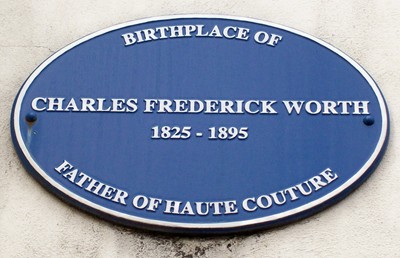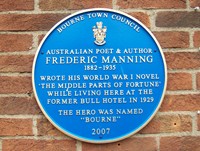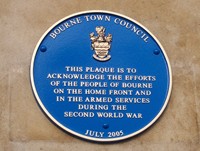|
Blue plaques
The custom of placing blue plaques on buildings associated with the great and the good throughout the country has been with us now for almost 150 years. The first blue plaque scheme started in England with a tribute to the romantic poet Lord Byron in 1867. It was then run by the Society of Arts but since 1986 has been administered by English Heritage and more than 900 have been installed in towns and cities around the country. Now almost 150 years later, the food writer Elizabeth David who popularised Mediterranean food in post-war British households has been honoured, the plaque having been installed at the house in Halsey Street, Chelsea, where she lived for 45 years until her death in 1992 at the age of 78. There are strict rules governing the installation of blue plaques on buildings. Those named must have been dead for at least 20 years and have lived at the location they are being connected with for either a long time or during an important period, such as when writing their seminal work or creating their key invention while the building itself has to be the same as it was when they lived there. There is no national body governing such commemoration but the criteria used to determine who and where gets a plaque varies widely from place to place and it is usually left to local councils, charities and history and heritage organisations to police the plaques issued in their areas. Unfortunately, we only have one authentic blue plaque in Bourne. It was erected on the front of Wake House in North Street in December 2002 to commemorate the life of Charles Worth (1825-95), the solicitor’s son who was born there and went on to achieve fame in Paris as an international fashion designer and founder of haute couture who dressed many of the world’s richest and most famous women. The blue plaque replaced a more modest one erected by the former Bourne Urban District Council many years before but that has been preserved and now hangs in the entrance foyer of Wake House which is used for various community activities. Although the criteria demanded by English Heritage is daunting, this should not stop local authorities and other organisations from financing their own blue plaques and so those left out of the national scheme but deserve local recognition can still be honoured as has happened here in Bourne. The town council has already shown the way by erecting one in June 2009 on the front of the Burghley Arms in the town centre to commemorate Frederic Manning (1882-1935), the Australian poet and author who lived there for a time while writing his famous novel about life in the trenches during the Great War, The Middle Parts of Fortune, later entitled Her Privates We. The date on the front actually says 2007 but there was a delay while attempts were made to persuade someone from the Australian High Commission in London to unveil it, but they were unsuccessful. The circular plaque cost £400 and was financed from council funds, a tasteful work in blue with gilt lettering and a reminder to those who pass by of the man who laboured within to produce such a notable literary work.
There was already another plaque on the Burghley Arms, also erected by BUDC soon after the name of the inn was changed in 1955, informing us that this was the birthplace of the illustrious Elizabethan statesman, William Cecil (1520-98), trusted adviser to Queen Elizabeth I and the first Lord Burghley, when it was a private house owned by his parents, Richard and Jane Cecil. The building became a coaching inn in the early 17th century when it was called the Bull and Swan although by the 19th century it was known simply as the Bull. There has been some disappointment in the town that Raymond Mays (1899-1980), the inspiration behind the BRM which won the world championship in 1962, has not been given a blue plaque for his contribution to international motor racing but this has never materialised although he is remembered by an oval iron sign that was erected on the outside wall of his lifetime home at Eastgate House soon after his death. Unfortunately, it became a target for vandals in 2007 when it was daubed with spray paint but was later restored to its original condition by the Civic Society. There is another similar memorial which remembers the ordinary people of this town and their fortitude in the face of austerity and uncertainty during the Second World War of 1939-45. Sixty years after the conflict ended, the town council erected a blue plaque on the front of the Town Hall in 2006 to acknowledge their contribution to the national effort both in the armed forces and on the home front. On a more modest level, many of our leading citizens who achieved prominence locally are remembered among the 300 street names around Bourne such as councillors, doctors, nurses and businessmen. They include Robert Harrington (1589-1654), wealthy businessman who left his fortune to Bourne for charitable purposes (Harrington Street), John Lely Ostler (1811-59), philanthropist who founded schools and assisted the poor (Ostler Drive), Charles Sharpe (1889-1963), soldier who won the Victoria Cross for bravery in action during the Great War (Sharpe’s Close), Horace Stanton (1897-1977), solicitor who was instrumental in the establishment of the Wellhead and War Memorial Gardens in 1956 (Stanton Close),Viscount Midleton (1903-88), who with his wife Sheila did so much work for deaf charities and the Girl Guides (Midleton Gardens), Dr Ruth Finn (1903-92), general practitioner and commandant of the Girls’ Training Corps during the Second World War (Finn Close), and many more. These names are selected by South Kesteven District Council which considers suggestions from the town council and housing developers although members of the public may also make recommendations. All of these memorial plaques and street names are an essential part of our heritage because they serve as a daily reminder for future generations of those people and events which had a momentous effect on our community in past times but who might otherwise be forgotten with the passage of time. WRITTEN JUNE 2016 See also Street names
Go to: Main Index Villages Index |


